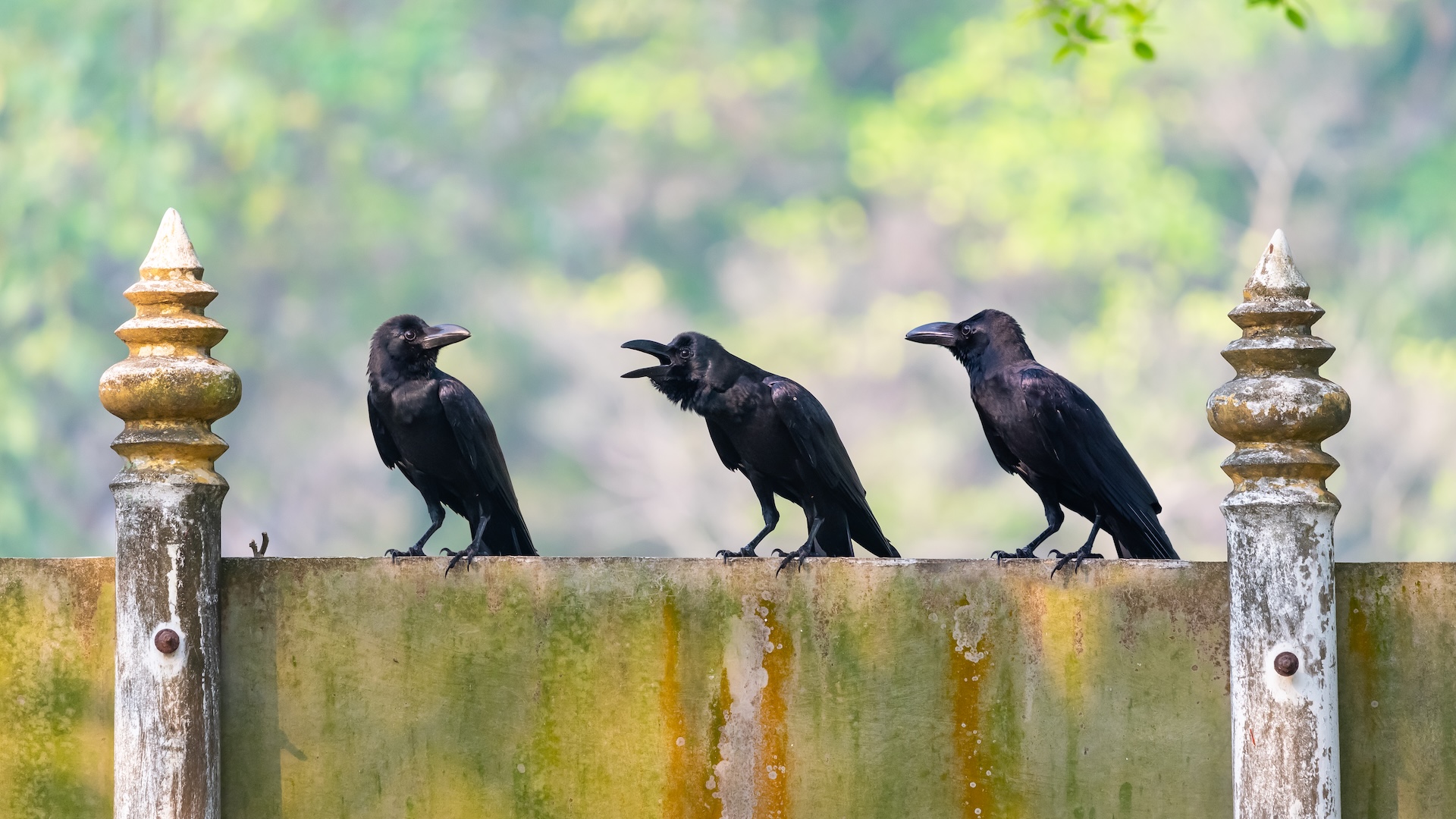The idea of an animal that can count or do math might sound like something out of a viral news story or TikTok video. But a sense of quantity, sometimes called “numerosity,” appears across a surprising range of species.
So, which animals can count and understand simple math?
“Many species, including insects, mollusks, lizards, birds and many types of mammals (land living and sea living) can discriminate between quantities of things,” Michael Beran, a professor of psychology at Georgia State University, told Live Science in an email. This ability has the evolutionary benefit of helping animals find more food, thus helping them stay alive and pass on their genes.
For instance, research has shown that honeybees (Apis mellifera) count landmarks while flying toward nectar-rich flowers. Golden orb weaver spiders (Nephila clavipes) keep track of how many insects are caught in their webs.
Túngara frogs (Physalaemus pustulosus) even stage numerical duels as part of their mating ritual: One male makes a whining call that ends in a strange, brief sound called a “chuck,” and another male frog replies with an extra chuck. This competition goes on, with an increasing number of chucks, until they run out of breath.
Lionesses (Panthera leo) weigh their odds in battle by counting the number of roars from an approaching rival pride before deciding whether to attack or retreat.
And, in 2024, researchers discovered that carrion crows (Corvus corone) are capable of vocalizing a precise number of caws in response to visual or auditory cues, allowing them to count out loud between one and four.
But it’s likely that these species “cannot count in the way that we mean this in humans,” Beran pointed out.
Instead, many animals have a cognitive tool that scientists call the approximate number system (ANS), or “number sense,” Giorgio Vallortigara, a professor of neuroscience at the University of Trento in Italy, told Live Science. The ANS seems to rely on “number neurons,” nerve cells that show a peak response to specific quantities, he said. “Interestingly, we found these neurons even in newly hatched chicks, suggesting that the ANS could be innate.”
Related: When was math invented?
This “number sense” doesn’t work like counting on fingers — it’s more about making quick comparisons. Its two defining traits are the distance effect and the size effect. The distance effect is the idea that it’s easier to distinguish numbers that are farther apart, such as 8 and 4, compared with 8 and 6, and the size effect is the idea that it’s easier to compare smaller numbers than larger ones, even if the difference is the same. For example, it’s easier to compare 2 and 4 than it is to compare 12 and 14, Vallortigara said.
The ANS follows Weber’s law, which states that animals perceive differences in quantities based on ratios rather than absolute amounts, Irene Pepperberg, an adjunct research professor at Boston University who famously worked with Alex the parrot, told Live Science.
Pepperberg and Beran said the ability to estimate quantities using the ANS is quite different from the human ability to count, which involves knowing that a numeral like “4” means exactly four things, regardless if they are corks, keys or marbles. True counting, Pepperberg explained, also involves learning symbols, understanding the value represented by each numeral and knowing their order. Human children need years of learning to fully grasp these ideas, and “only a very few nonhumans” — Alex the parrot and two chimps called Sheba and Ai — “have gotten anywhere close to true counting,” Pepperberg said.
Alex the parrot could identify and correctly order Arabic numerals from one to eight and even add two sets of objects, like crackers or jelly beans.
Can animals do math?
For many researchers, counting is seen as a precursor and foundation of math, but not actually math itself. So although many animals seem capable of basic counting — at least when it comes to noticing changes in quantity, the vast majority are not actually doing math, which at a basic level involves arithmetic: numbers and symbols that are used to do addition, subtraction, multiplication and division.
“Formal arithmetic of the sort our children learn at school is clearly a quite recent cultural invention,” Vallortigara said. Some traditional societies, like the Himba tribe in Namibia, still rely on the ANS for estimating quantities, he pointed out. With the rise of agriculture and livestock farming, humans needed more precise calculations, likely giving rise to formal arithmetic.
However, scientists have devised clever experiments to show that a few select species might be able to handle simple math, such as addition and subtraction, Beran said.
When trained to associate certain colors or symbols with arithmetic operations, several animal species — including African grey parrots, pigeons, certain primates, honeybees, stingrays and cichlids — have demonstrated the ability to perform basic addition and subtraction with small numbers. In these experiments, animals learned to interpret visual cues (like a blue dot for “add one”) and then apply those rules to solve simple math problems.
“And, perhaps, with creative designs, even some forms of multiplication and division, which are really just special cases of addition/subtraction [might be possible],” Beran said.
But if math involves larger numbers — like solving 12 + 22 — or more complex formulas, like those used in algebra, “then the case is much, much weaker for nonhuman animal capacities for arithmetic,” Beran said.
Pi quiz: How much do you know about this irrational number?
